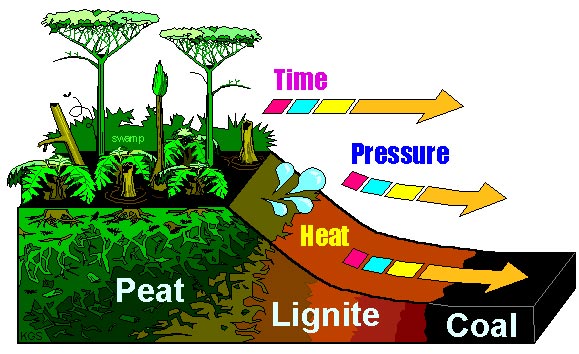In 1742, a settler, John Salley, discovered coal in the Kanawha Valley of what is now West Virginia. However, the mining industry didn’t take off until nearly 100 years later. Until the mid 1800s, coal was used by blacksmiths and for heating the homes of the few hardy settlers in the area. Coal did get some use when it was seen as an alternative to charcoal in fueling the salt furnaces in the region. Many of the coal mines in the state closed during the Civil War. Destruction of the state’s infrastructure, which was mostly river traffic at that time, prohibited transport of coal. When the need for high energy coal brought about from the growth of manufacturing and industry expanded, the coal industry in the Mountain State grew wildly. Coal mining moved into the southern part of West Virginia in the early 1900s. The Pocahontas and Island Creek Coal Companies were early major players in extracting the coal from West Virginia’s mountains. Mining technology evolved quickly from minors with picks and shovels to mule drawn wagons. Mechanization brought continuous mining machines and even huge draglines to obtain the coal that had come into high demand for the growing steel industry and for the production of electricity.
The coal industry provided the region with jobs and a way of life. Since most of the coal mines were in remote areas, the coal companies often built towns or “coal camps” where miners and their families lived, worshiped and attended school. Most West Virginians have family members with fond memories of growing up in the close knit community of a coal camp. Among the most famous resident of a southern West Virginia coal camp, Coalwood, is Homer Hickham who wrote the book Rocket Boys about which the movie October Sky was made. In this book and movie, Hickham tells the story of the influence of a coal camp teacher in shaping his success as a NASA scientist.
Much of the culture in southern West Virginia was cast by the coal industry. In order to find a labor pool for mining, the coal companies sent recruiters to England, Scotland, Wales, Italy and Spain to find workers. Descendents of these immigrant miners are still in the area and contribute to the diverse culture of the coal fields. These proud new Americans provided the coal energy that powered the growth of their newly adopted county during the exponential growth of the Industrial Revolution.
This growth of coal mining in the state was not without controversy. Numerous mine wars pitted coal mine operators and miners in brutal and bloody battles. The Battle of Blair Mountain was one of the more famous (or infamous) of these mine wars. The movie, Matewan, was a popular film in 1987 that presents a picture of life in a Mingo County, West Virginia city that depends on coal and coal mining for the economy. Coal has also been implicated in black lung disease in which accumulated in the respiratory system of miners led to numerous health problems. Today unions in the mine are a major part of the lives of the minors assuring their safety and compensation.
The coal in southern West Virginia is bituminous coal that is from the Pennsylvanian Era (280-310 mya). A geologic map of the state can be found on the West Virginia Geologic Survey’s website. Bituminous coal is a fairly soft coal. It is of higher quality than lignite coal but poorer quality than the harder anthracite coal. Bituminous coal is an organic sedimentary rock formed by the compression of peat bog material present in the lush growth found in the area during the Carboniferous Period. The carbon content of bituminous coal is around 60-80%; the rest is composed of water, air, hydrogen, and sulfur. The sulfur found in coal has caused it to receive controversy as a fuel source because of emissions of sulfur compounds into the air when it is burned.

The heat content of bituminous coal ranges from 20 to 30 million BTUs per ton. This makes coal an excellent energy source for electricity production and heavy manufacturing. Coal’s density is about 52 lbs per cubic foot. The peat layer that became compressed to form the bituminous coal has become very compressed in the formation of the coal. It is estimated that the resulting coal layer is 20% of the thickness of the original peat layer that formed it. As a rule of thumb, each foot of coal seam thickness represents about 10,000 years of plant growth buildup and peat accumulation.
Environmental concerns have once again made coal mining controversial. However, the energy crunch and costs of foreign energy sources have brought coal back into the news. Clean coal and coal liquefaction technologies are being explored as ways of using this valuable resource. Of Mingo County’s original 6,172,807,449 tons of coal, geologists estimate that 3,382,117,636 are still available for extraction.
This coal seam is part of the Williamson Coalfield in Mingo County West Virginia. The coalfield was once nicknamed “The Billion Dollar Coalfield” since this coal fueled the entire region’s economy.

In order to claim this “Coal Seam” Earthcache you must complete the following requirements:
Send an email to the cache owner (do not post in the log) with the following estimates:
- The thickness of the coal seam at this point (must be in centimeters).
- The thickness of the peat that formed this coal seam (must be in meters).
- The number of years of peat accumulation that formed the coal at this location.
Although not required, photos of you and/or your GPSr at the location with the coal seam in the background are appreciated.